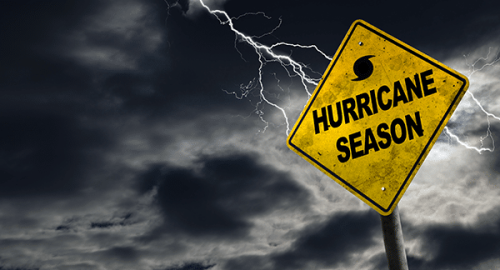One of the most important components of severe weather response is being prepared before inclement weather strikes. This includes having a robust plan for quick, coordinated response. Your severe weather plan should be within the emergency operations plan (EOP) that outlines the courses of action your school community will take to prepare for, respond to, and recover from weather-related incidents.
The following best practices will help you develop a severe weather plan that is built specifically for your school and every person inside of it.
1- Designate a Weather Coordinator
It’s best practice to designate a responsible staff member or group of individuals as your Severe Weather Coordinator(s). Your coordinator(s) should attend local weather training, such as the free NWS Spotter Training, and be responsible for creating your plan and determining when to activate your response. They should tailor the plan to your specific school and consider every worst-case scenario. Best practice is to also collaborate with your county’s emergency management director and seek guidance from your state’s department of education and agencies like the National Weather Service (NWS) and the Red Cross.
2- Determine Your Safety Zones
Schools should work with architects or engineers who are familiar with the campus, and if desired, their local fire department and county emergency managers to determine the safety zones. These zones should be marked on your school floorplan and indicated by signage throughout the campus. Students and staff should be familiar with these zones and how to access them at different times of the day, including if they are in between class periods, at lunch in the cafeteria, or outside on the football field.
Here are some general guidelines to help you determine your school’s safety zones.
- Account for travel time, the size of the space, and ensure zones are accessible and safe for students, staff, and visitors that have special needs or disabilities.
- Verify your campus’s flood plains, elevation, and drainage. Mark where gas shutoff and electrical appliances are throughout the building.
- The safest places are interior, windowless rooms like bathrooms, offices, or closets, and the most dangerous locations on campus are large rooms with expansive roofs, such as your cafeteria, auditorium, or gymnasium.
- School bus drivers should know possible shelter areas along their bus routes in case severe weather happens while they are on the road. Some possible shelters can include community centers, libraries, and churches.
3- Receive Accurate, Timely Weather Information
The fastest method to receive weather information is through the NOAA Weather Radio, which is a network of radio stations that continuously broadcasts information directly from the National Warning System (NWS). Best practice is to have the radio in your school’s main office or in the office of the person responsible for implementing your weather plan. The radio must also be accessible outside of regular school hours, such as during afterschool football or band practice.
Many schools also use mobile panic alert systems that enable staff and teachers to quickly initiate weather-related emergencies from wherever they are on campus. The panic alert system should instantly alert your school community of the emergency and what actions, if any, they need to take to keep everyone around them safe. The most powerful panic alert systems also directly connect to 9-1-1, so you can get the right help if the situation escalates.
4- Know When to Activate Your Plan
Depending on the type of storm, expected impact to your campus, and the timing, it may be best to activate your plan in phases. For example, a thunderstorm may only require you to move students from dangerous areas, like your portable classrooms or the track field, into a physical building. However, if the storm strengthens and leads to a tornado warning or watch, you must be prepared to activate your full response plan and move everyone into their assigned safety zones.
5- Practice Your Severe Weather Response
Your severe weather plan is only valuable if the procedures are routinely practiced. Drills familiarize your school and community with your plan as well as individual responsibilities, roles, and actions. This helps everyone feel prepared so they can confidently respond and keep everyone safe in an actual severe weather situation.
When you’re scheduling drills, think about the location, duration, time, and frequency. Let stakeholders—including guardians—know about drills well in advance so no one is caught off guard. Every drill should strictly follow your weather plan and EOP. This allows your school community to gain more familiarity with the plan and become more confident with each drill. It also creates “muscle memory” in participants that increases response efficiency.
Drills should also be conducted to test your school’s procedures and policies and reveal areas of weakness. Your safety team should immediately debrief after every drill. Teachers and students should also be encouraged to provide feedback.
6- Use a Trusted Emergency Management System
Preparing for, responding to, and recovering from severe weather events can be daunting, but it doesn’t have to be. When you team with the right partner, they can bring knowledge and trusted solutions to keep your school safe not only against weather-related events, but all types of school emergencies.
The right emergency management system should be customizable to your school and district policies, as well as empower you to:
- Practice and analyze drills
- Initiate an emergency through a mobile panic button
- Account for each individual on campus
- Reunify students with guardians
7- Download Our Free Severe Weather Checklist
Although we can sometimes predict when severe weather and natural disasters will impact our communities, there are times when we do not receive advance notice. Earthquakes, tornados, wildfires, and flash floods can take everyone by surprise.
Schools are obligated to be prepared. Download our Guide to K-12 Weather Safety to learn more best practices and prepare for various weather events.





